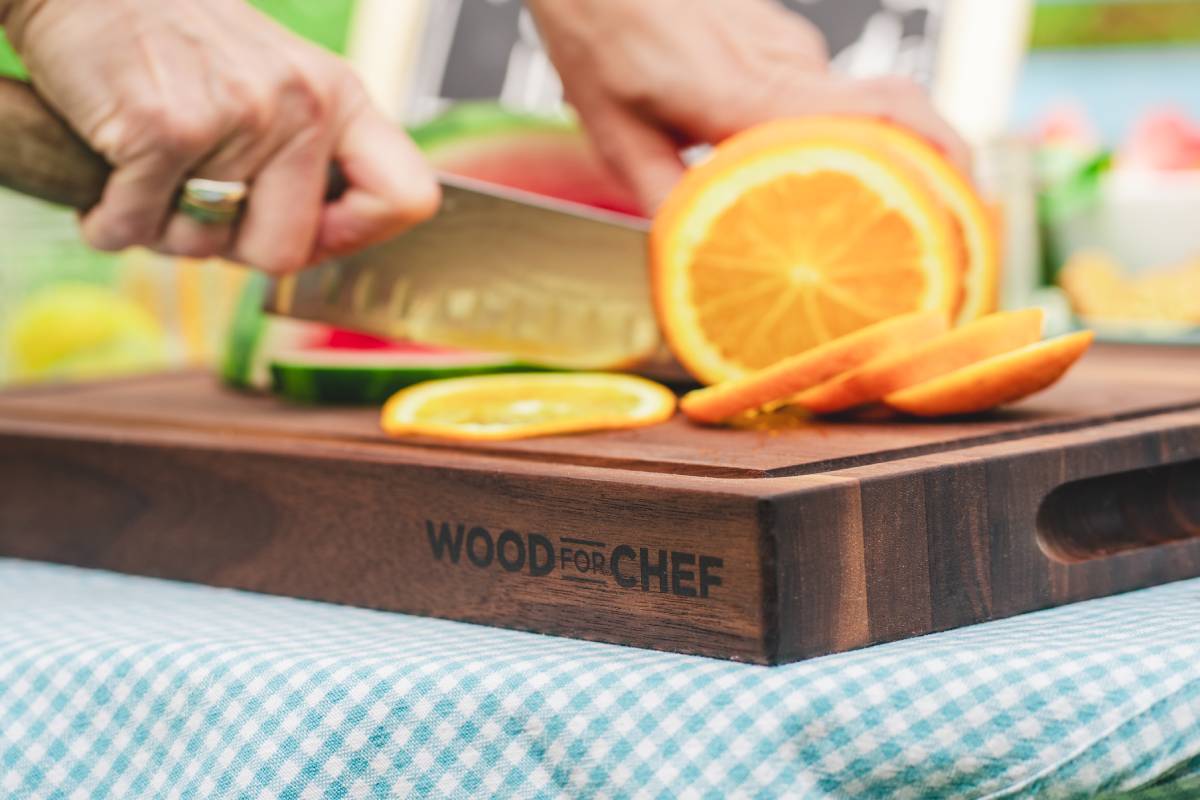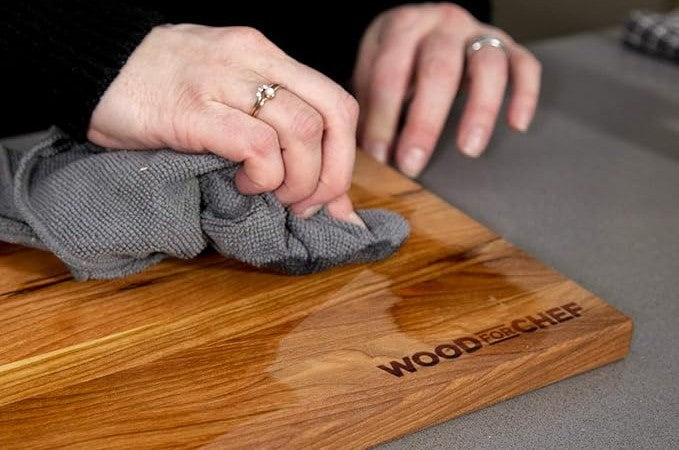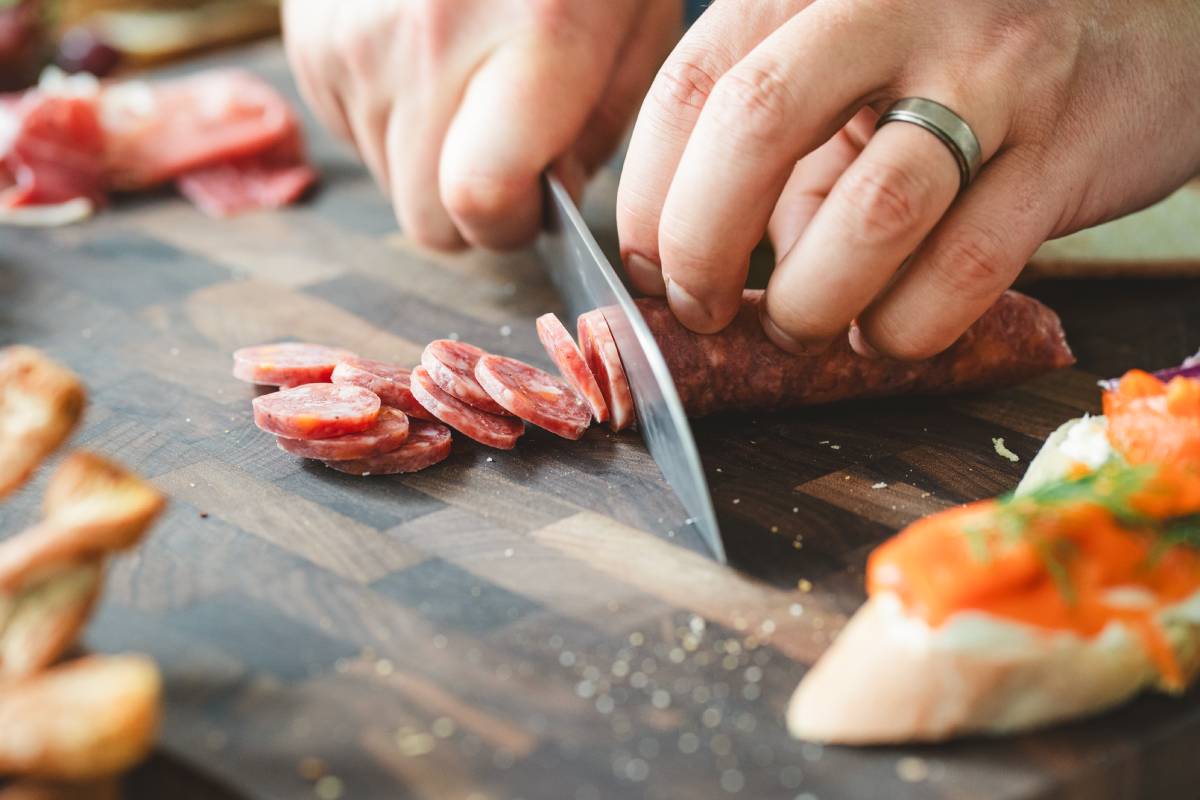Wood butcher blocks occupy a unique space in the kitchen: they are workhorses built for heavy chopping yet also serve as pieces of artistry that enhance your cooking space. Choosing the right butcher block isn’t just about picking the first board you see—it’s about understanding the material, construction, size, and craftsmanship that best fit your culinary needs. This guide draws on WoodForChef®’s expertise and product lineup to help you make an informed decision, following the principles of Google’s quality guidelines for trustworthy, expert‑driven content.
Why invest in a wood butcher block?
Wood butcher blocks offer several benefits over other materials. Hardwoods like maple, walnut and cherry are naturally antimicrobial and provide a forgiving surface that keeps knives sharp. Their tight grain structures prevent moisture absorption and warping, while their self‑healing fibers close up minor knife marks, maintaining a smooth cutting surface over time. Wood is also biodegradable and, when responsibly sourced, a more environmentally friendly option compared to plastics. Investing in a butcher block made from FSC‑certified wood supports sustainable forestry practices.
Key factors when choosing a butcher block
Wood species
Maple: Hard maple is the industry standard for butcher blocks. It offers an exceptional combination of hardness, moisture resistance and natural antibacterial properties. Its tight grain means the board won’t warp or crack easily and develops a beautiful patina with regular oiling. Maple butcher blocks, such as WoodForChef’s Butcher Block Pro, provide a durable, light‑colored surface that suits most kitchens.
Walnut: Walnut butcher blocks bring rich, dark tones and unmatched elegance to your kitchen. This hardwood is slightly softer than maple yet still very durable, making it gentle on knife edges. Walnut doesn’t retain odors and remains neutral even when preparing pungent ingredients. Because of its rarity and aesthetic appeal, walnut blocks are often priced higher.
Cherry: Cherry wood offers a softer surface and an even texture that is exceptionally knife‑friendly. Its warm hue darkens with age and oiling, creating a gorgeous patina. Cherry boards are lighter, making them easier to move or serve from. Like walnut, cherry doesn’t retain odors, making it versatile for all types of food preparation.
When selecting a species, consider your cooking habits and aesthetic preferences. Maple is great for everyday heavy chopping; walnut is ideal if you want a luxurious statement piece; cherry suits those who prefer a lighter, knife‑friendly surface with a rich patina.
Grain construction: edge grain vs. end grain
Edge grain butcher blocks are constructed by gluing long strips of hardwood side by side so the wood fibers run horizontally. Edge grain boards are affordable and provide a smooth, knife‑friendly surface, but they may show knife marks more quickly and require occasional sanding and oiling to maintain appearance.
End grain butcher blocks use short square pieces of wood arranged vertically so the “end” of the wood fibers forms the cutting surface. When a knife cuts into an end grain board, the fibers separate and then close back up, making the surface self‑healing and keeping knives sharper longer. End grain boards are often considered the superior option for heavy chopping and professional kitchens, but they are more labor‑intensive to produce and therefore more expensive. They also require more frequent oiling to prevent drying.
Choose the construction based on your budget, maintenance preferences and how heavily you use your board. Edge grain boards like WoodForChef’s Raised Butcher Block offer affordability and a stable cutting surface; end grain boards are ideal for serious chefs seeking maximum longevity and knife protection.
Size and thickness
The size of your butcher block should match your cooking style. Small blocks around 12 inches (like the Raised Butcher Block, measuring 12 × 12 × 1.5 inches) are perfect for quick tasks, limited counter space or serving purposes. Medium‑sized blocks (14 – 18 inches) accommodate daily meal prep, while large blocks (over 18 inches) provide ample workspace for cutting large roasts or rolling dough. Thickness affects stability and durability: standard butcher blocks range from 1½ inches (edge grain) to 2 inches or more (end grain). Thicker blocks withstand heavy cleaver work and reduce the risk of warping.
Design features and ergonomics
Modern butcher blocks often include features that enhance usability:
- Raised feet: WoodForChef’s Raised Butcher Block includes dual pairs of legs—one set in hardwood and another in non‑slip rubber—allowing you to choose between decorative presentation and practical stability. The elevated design reduces strain on wrists and back during prolonged prep.
- Reversible surfaces: Many blocks are reversible, effectively doubling the usable area and promoting even wear.
- Juice grooves and handles: For boards used to carve meats or juicy fruits, grooves along the perimeter catch liquids and prevent mess. Built‑in handles or finger grips make it easier to lift and move the board.
- Pre‑seasoning: Some boards, like the Raised Butcher Block, arrive pre‑seasoned and ready for use, saving you the initial conditioning time.
Sustainability and certifications
Responsible sourcing is essential when selecting a wood butcher block. WoodForChef uses FSC‑certified wood, ensuring that the wood comes from responsibly managed forests that preserve biodiversity and support local communities. Sustainable sourcing also supports the longevity of forests and contributes to environmental stewardship. Look for products explicitly labeled with certification or ask the manufacturer for documentation.
Budget and maintenance
High‑quality butcher blocks are an investment. Edge grain boards are generally less expensive than end grain boards because they require less labor. Prices can vary widely based on wood species (walnut tends to be pricier than maple or cherry), size, and craftsmanship. Factor in the cost of maintenance supplies, such as Food Grade Mineral Oil, which hydrates and protects the wood. Some products, like the Butcher Block Pro, come with a bottle of mineral oil included.
To maximize your investment:
- Oil regularly: Saturate the board with food‑grade mineral oil to prevent dehydration, staining and odors.
- Clean properly: Hand‑wash with mild soap and lukewarm water, then dry thoroughly; never submerge the board or put it in the dishwasher.
- Rotate and sand as needed: Rotate your board to distribute wear, and lightly sand with fine sandpaper to remove deep cuts before re‑oiling.
WoodForChef butcher blocks: Our top picks

Butcher Block Pro
WoodForChef’s flagship Butcher Block Pro exemplifies premium craftsmanship. This 18 × 16 × 2‑inch edge grain block is available in maple, cherry and walnut. The thick 2‑inch profile offers rock‑solid stability for heavy chopping, while the edge grain construction balances durability with knife friendliness. Each block is reversible and comes pre‑oiled; a bottle of Food Grade Mineral Oil is included with your purchase. The maple and cherry versions share a price point (around $224.95), while the walnut version commands a premium due to its scarcity.
Why choose it? If you need a large, professional‑grade board that can handle everything from daily meal prep to holiday feasts, the Butcher Block Pro offers the perfect combination of size, durability and aesthetic appeal. Its generous surface area lets you spread out ingredients, and its reversible design doubles its lifespan. The inclusion of mineral oil ensures that you can start conditioning your board right away.
Raised Butcher Block with Feet
For cooks seeking a compact yet innovative option, the Raised Butcher Block is a standout choice. Measuring 12 × 12 × 1.5 inches and crafted from hard maple edge grain, this board features dual pairs of legs—hardwood and non‑slip rubber—offering a choice between decorative presentation and practical stability. The elevated design creates a comfortable working height and reduces strain during extended prep sessions. Made from FSC‑certified maple and pre‑seasoned for immediate use, the raised block is both durable and eco‑friendly. It weighs around 6 lbs, making it portable for serving charcuterie or cheese.
Why choose it? If you’re limited on counter space or want a board that doubles as a serving platter, the raised block is ideal. Its compact footprint suits small kitchens, while the option of rubber feet ensures stability during use. The board’s edge grain construction provides a smooth surface that’s gentle on knives, and its pre-seasoning means you can start chopping immediately.
Avoiding the wrong wood and counterfeits
Not all woods are suitable for food preparation. Woods with high toxicity (e.g., black locust, yew) can leach harmful compounds, and open‑grained woods like oak can trap moisture and food particles, creating a breeding ground for bacteria. Softwoods such as pine and cedar are too soft to withstand repeated cutting and will quickly become scarred and uneven. Bamboo boards, often marketed as eco‑friendly, may raise concerns due to their manufacturing processes and inconsistent quality control. Always verify that the board is made from food‑safe hardwoods and is sourced sustainably.
Buy directly from reputable manufacturers or authorized retailers to avoid counterfeit or low‑quality boards. WoodForChef offers transparency about materials, sourcing and care instructions; their boards come with certifications and thorough product descriptions. According to Google’s quality guidelines, trustworthy pages provide clear information about the product’s origin and craftsmanship, so examine the “About” and “Product Details” sections before purchasing.
Conclusion
Choosing a wood butcher block is about matching material, construction, size and features to your cooking style and values. Maple, walnut and cherry each offer unique benefits—from maple’s durability and moisture resistance to walnut’s elegance and neutrality and cherry’s warm patina and knife-friendly surface. Decide whether you prefer the affordability of edge grain boards or the self‑healing surface of end grain boards. Consider features like raised feet, juice grooves and reversible surfaces; evaluate the board’s size relative to your workspace; and prioritize sustainability by selecting FSC‑certified products.
WoodForChef’s Butcher Block Pro and Raised Butcher Block exemplify these principles, offering premium materials, thoughtful design and sustainable sourcing. Pair your chosen block with Food Grade Mineral Oil for regular maintenance to ensure that your investment lasts a lifetime. By considering the factors outlined in this guide and trusting reputable brands that emphasize expertise and craftsmanship, you’ll select a butcher block that not only meets your culinary needs but also becomes a cherished centerpiece in your kitchen. Explore WoodForChef’s full collection to find the perfect match for your cooking adventures.


